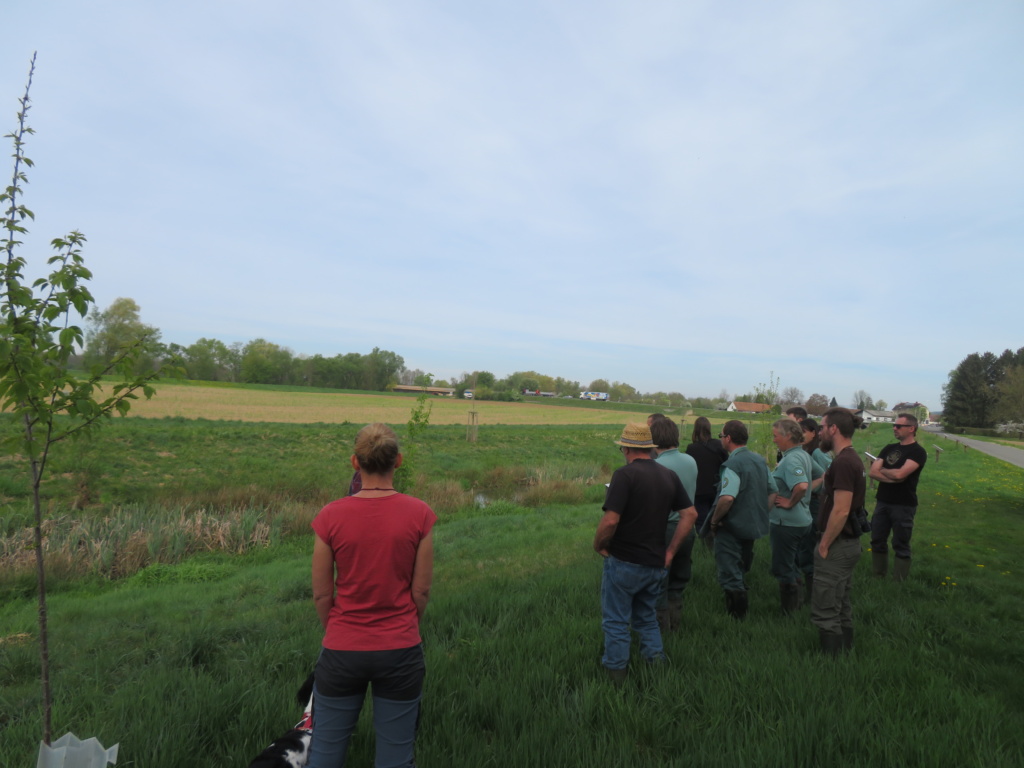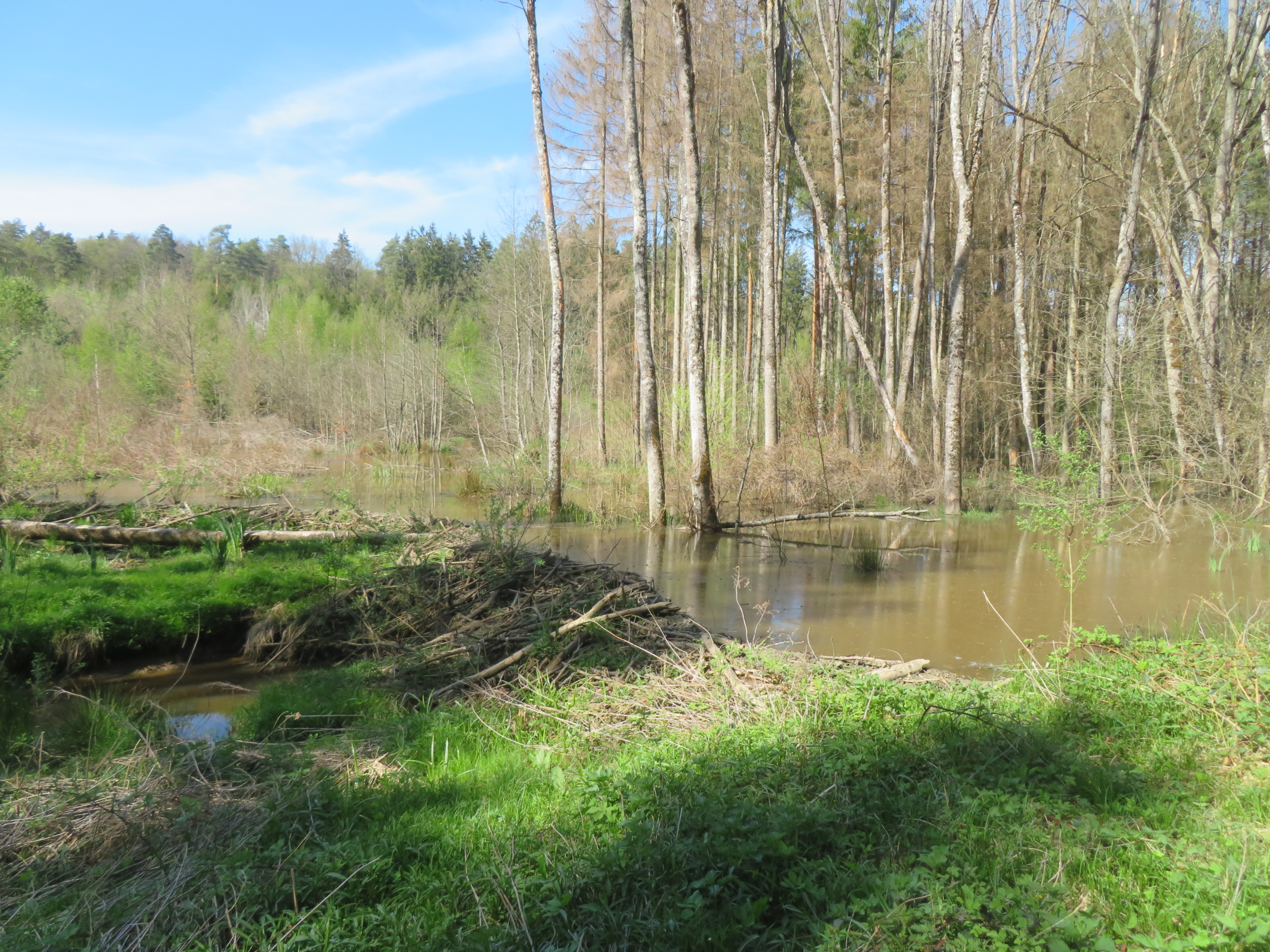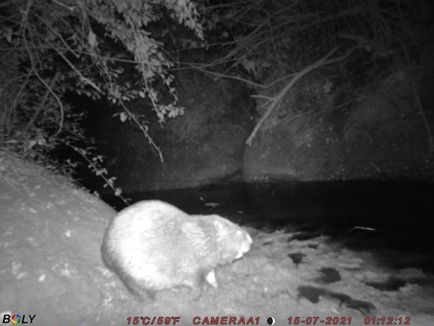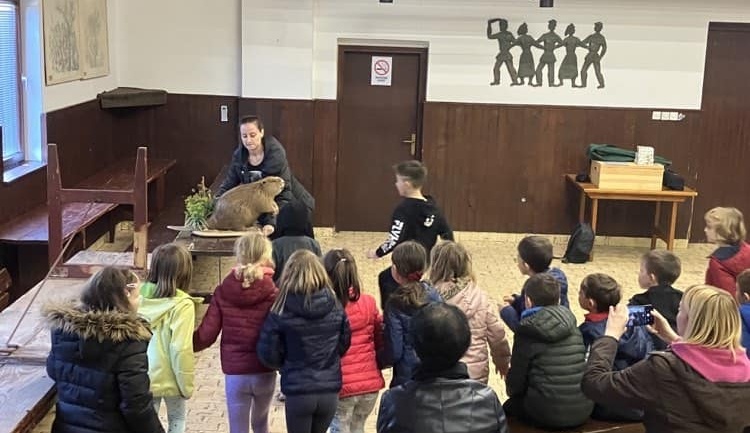On April 8th, 2024, we took part in an excursion that was a organized as as part of international cooperation in the management of beaver populations. In addition to the Slovenian representative from the Lutra Institute, there were also participants from Hungary and Austria.
We looked at various cases – from good practices, where coastal areas were bought up and thus given the beaver a free hand in the renaturation processes and creation of wetlands, to conflict cases, such as in the vicinity of the Hoppachbach stream, where the beaver dug a hole under the road next to the bridge. The stability of the bridge and the safety of the road were threatened, so the beaver dam was removed and the hole filled.
We found out about an interesting example (worthy of emulation) where the highway company bought a 10-meter wide coastal area over a length of more than 100 meters at every stream in the immediate vicinity of the highway as a compensatory measure, with the aim of leaving more space for the watercourse and its natural processes.
In the area of the new water reservoir, the beavers were resettled (for the first time in the history of the Austrian Burgenland region), as the water managers were afraid that the beaver dams would lead to increased sedimentation and thus a gradual reduction in the volume of the reservoir.
In Austria, each federal state has its own regulations regarding beaver management. In the Burgenland, there have been field advisors and beaver managers, who are assisted by volunteers. The Burgenland region has a budget of EUR 40,000 per year available to reduce conflicts with beavers and establish good practices (such as the purchase of coastal land). However, the budget is not the same every year – it depends on possible new conflicts and also the amount of funds spent from the previous year.





